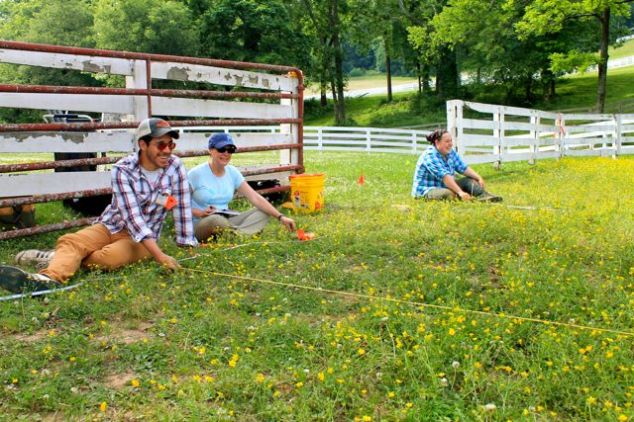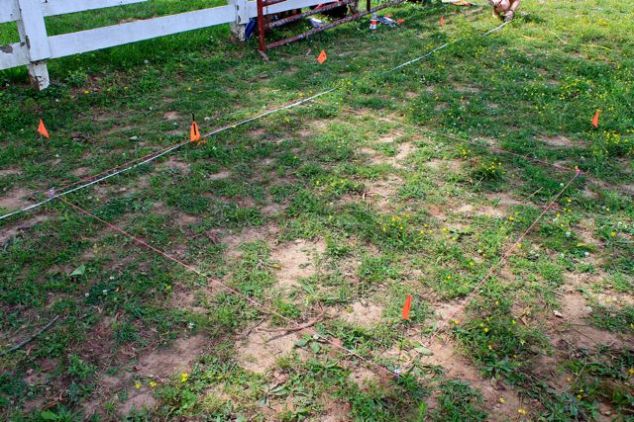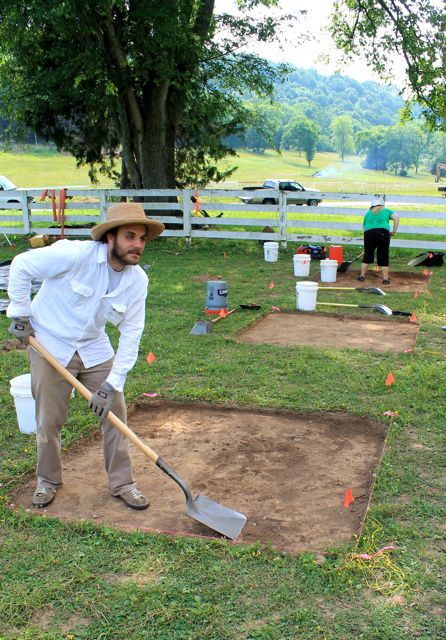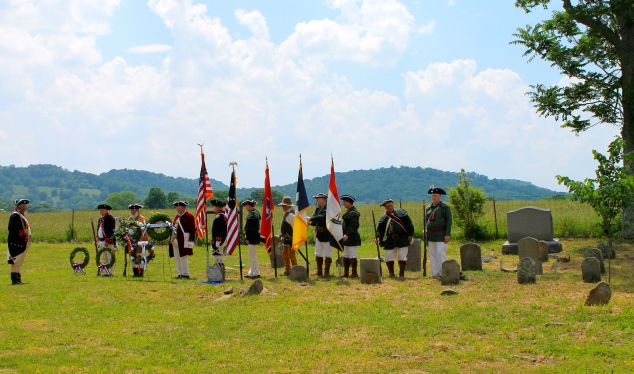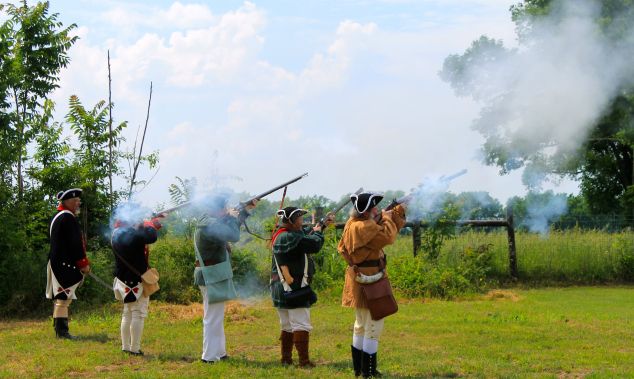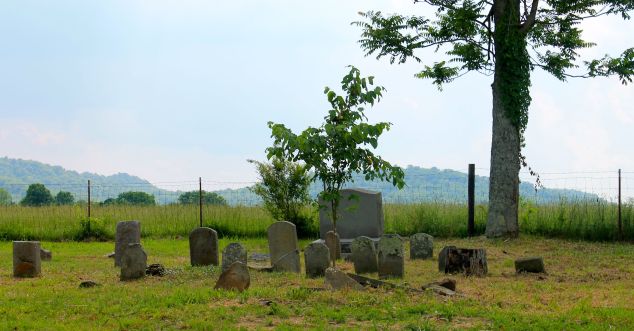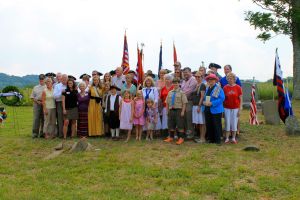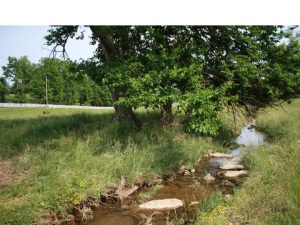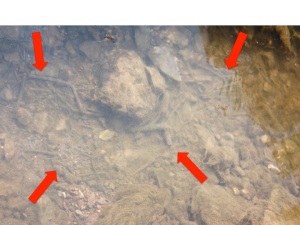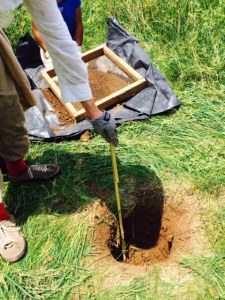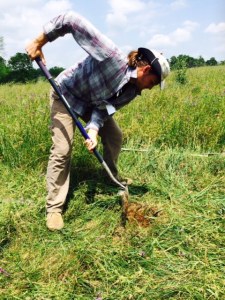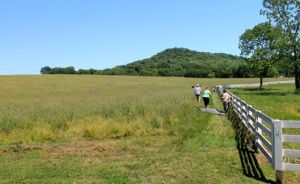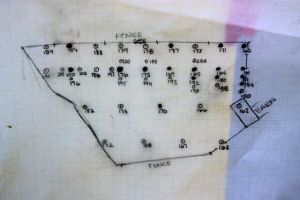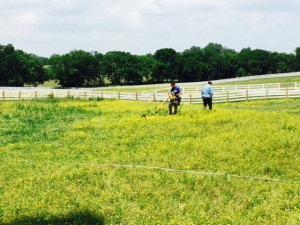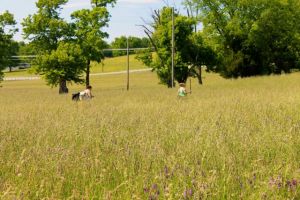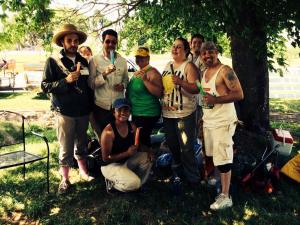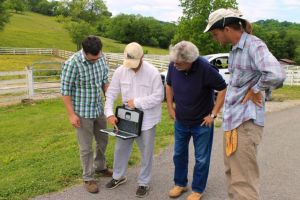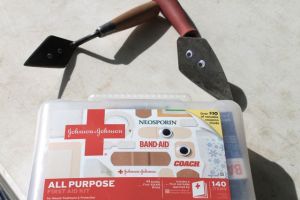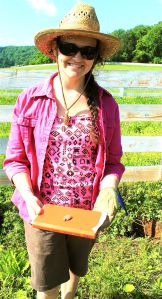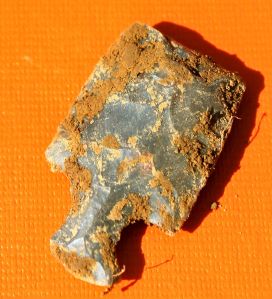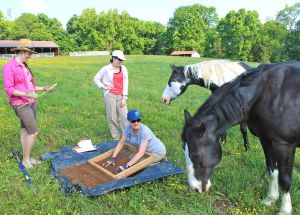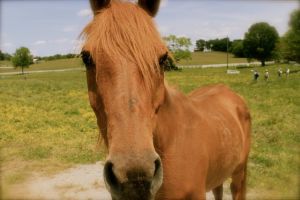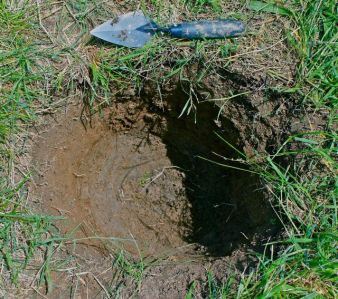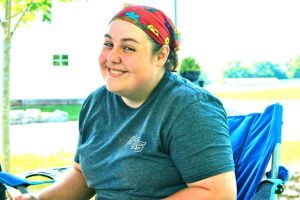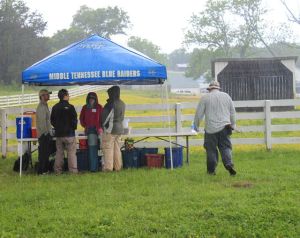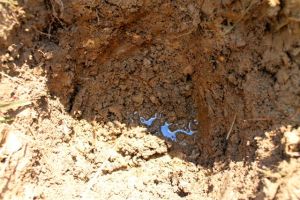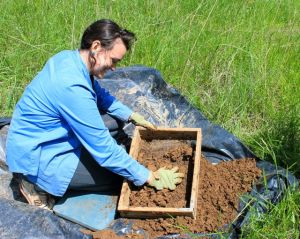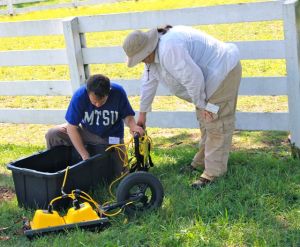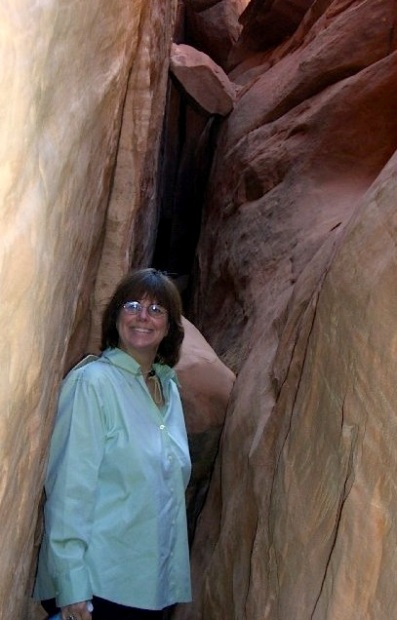The McDowell Farm in 1860
— post by Susan London-Sherer, Historical Archaeology/Historic Preservation Graduate Intern
This was an exciting week at the Magnolia Valley site! Our “newbie” classmates joined us and provided the inspiration we needed to complete the survey portion of our field school. We finally reached the magic number of shovel tests we were striving for…300! That may seem like a very large number of holes, but the property is over 300 acres, and our holes are spread out all over this beautiful farm. Looking back now, I think we can all embrace the “practice makes perfect” attitude, and safely say that we have that skill in our tool bags.
We are also very excited to learn more about the ways that humans have used this land over time. Periodically, I will be updating everyone on what the historic documentation has to tell us about Magnolia Valley in the past. As the public historian for the site, my job is to carry two tool bags when I report for work. One contains my gloves, trowels, and mustache duct tape, while the other contains a subscription to Ancestry.com and a few paper passes that grant me access to the Rutherford County Clerk’s office and the Williamson County Archives.
There are a few basic skills that I have had to pick up along the way, in order to make sense of the land survey language in the property deeds. I spent some time researching land measurements, including the “pole,” a common unit of measure in 1800s land surveys. A pole is literally a wooden pole that is 16.5 feet long. When a measurement appears on a land survey in poles, as most of the deeds related to this property do, you simply multiply the number of poles by 16.5 to convert to feet. It is also necessary to know that one mile is equal to 5,280 feet, and one acre is equal to 43,560 square feet of area. There are exactly 640 acres in one square mile, and that was about the size of William and Jannett McDowell’s farm in 1860.
The deeds for the 650 acres of land, owned by William McDowell, show that he purchased the land in four transactions over the course of twenty-one years. His first purchase was 460 acres from James B. Russell on August 5, 1836. McDowell paid $7,000 for the property, or $15.22 per acre. The following year, on June 14, 1837, McDowell purchased a 33-acre tract of land from Rea Joice for $700, or $21.21 per acre. The third tract of land, 31.5 acres, was purchased on April 6, 1854 from Johnson Jordan and cost $737.50 or $23.41 per acre. The fourth tract of land, a 100-acre parcel, was purchased on October 20, 1857 from John T. Harris and Catharine B. Harris for $2,400, or $24.00 per acre.
Once I traced the deed trail back to the owner whose gravestone marks the sole burial in the family cemetery, I wanted to know more about how Mr. McDowell used his property, and what he produced on his farm. According to the Selected U.S. Federal Census Non-Population Schedules 1850-1880, the McDowell farm consisted of 450 “improved” acres and 200 “unimproved” acres. The cash value of the farm was $28,000, the value of the farm equipment was $1,000, and the value of the livestock on the farm was $10,933. The McDowell’s livestock consisted of: 26 horses, 57 asses and mules, 10 milk cows, 4 working oxen, 15 other cattle, 8 sheep, and 115 swine.
In 1860, the farm produced 100 bushels of wheat, 25 bushels of rye, 4000 bushels of Indian corn, and 20 bales of ginseed cotton, in bales of 400 lbs. apiece. According to the 1860 Schedule 2. Form of Slave Inhabitants, the McDowell’s housed 24 enslaved individuals on the farm in six slave houses, the remains of which we believe are now buried beneath a subdivision. On page 69 of this document, it is noted that Mr. McDowell’s enslaved consisted on 14 males and 10 females, which included 10 children under the age of 10 years old. Please continue to follow our blog to find out more about the intriguing story of Magnolia Valley.
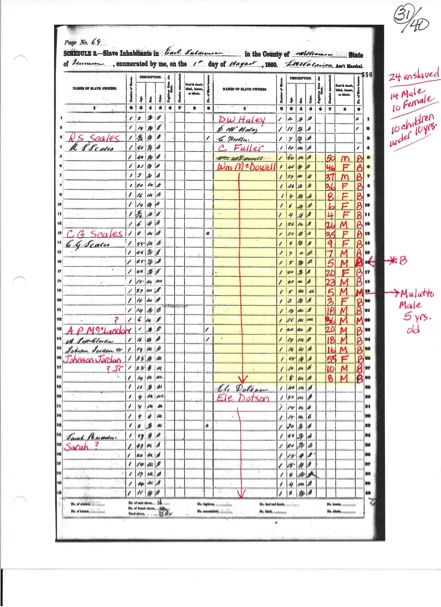
1860 Schedule 2. Slave Inhabitants – Highlighting William McDowell’s enslaved individuals. Courtesy of Ancestry.com.


